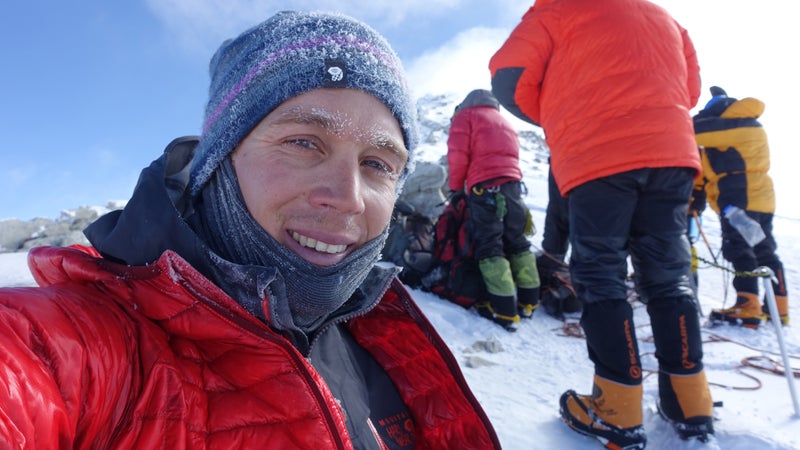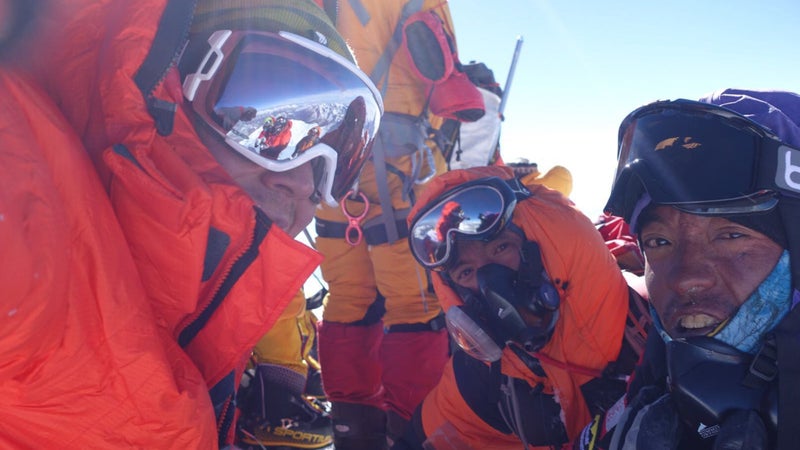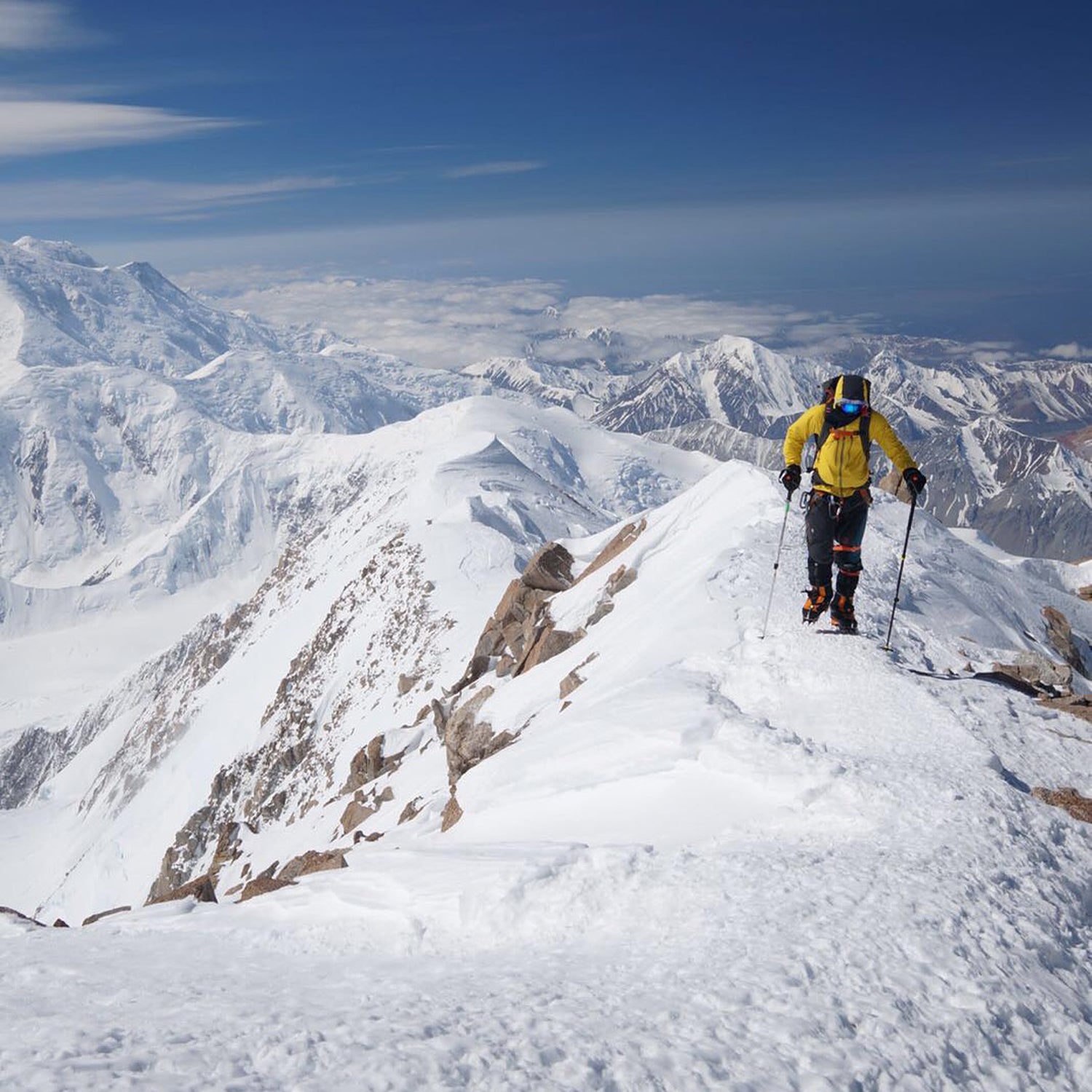The is one of the most formidable tests of endurance and adventure: reach the North Pole, the South Pole, and the highest peak on each continent, also known as the seven summits. Heading into 2016, only 45 people had ever completed the feat, and many take a lifetime to do so. Just two of them have ever finished in under a year. Enter Colin O’Brady. On May 27, 2016, the 31-year-old former professional triathlete from Portland, Oregon, completed the challenge in 139 days, shattering the previous Grand Slam speed record of 192 days and also setting a new record for the seven summits in the process. (O’Brady bagged all seven peaks in 132 days, beating the prior record by two days.)
I recently caught up with O’Brady to learn more about the massive project and the physical, psychological, and logistical durability that undergirded it.
Drive from Deep Within
After I graduated from Yale in 2006, I suffered near-fatal burns in a tragic accident. I was told I’d likely never walk again. Hearing that as a young, athletic man was devastating. Growing up, I’d always wanted to be a professional athlete, but I kind of let go of that goal after my last swim meet at Yale. But, for whatever reason, following the burn, I came back to that goal of being a professional athlete with a renewed motivation. I went all in.
After rehabbing—and at the time, walking was a big challenge—I decided to try my hand at triathlon. Less than three years later, I won the amateur title at the Chicago Triathlon and started racing professionally. The whole experience recalibrated my mind to realize the far-reaching bound of the human spirit and potential. I felt a profound desire to explore what is possible
Why the Explorers Grand Slam?
As much as I enjoyed racing triathlon, my true love is adventure and exploration. When I heard about the Grand Slam and brought it up with my fiancé, she didn’t shoot it down—she actually showed great enthusiasm and support. It became the latest manifestation of my desire to push the envelope and explore what I could achieve.
A Greater Purpose
I felt it was important to link this adventure to a cause. I was fortunate growing up to have parents who role-modeled healthy behaviors and encouraged me to explore the outdoors, but far too many kids do not. So I linked up with the , a charity that promotes physical activity and other healthy habits in youth. My goal is to raise one million dollars.

Physical Fitness
Sure, there’s a technical aspect to climbing, but this challenge is really about endurance—climb a massive peak, come down, fly to a different continent, and start again. During the lead-up to the Grand Slam, I still had an obligation to my sponsors to race triathlon, so I adjusted my schedule and went from focusing on shorter events to focusing on the Ironman distance. My biggest “workout” was probably racing Ironman Japan flat-out [O’Brady finished as the sixth pro], flying to Nepal, then, just a week later, climbing Mount Manaslu, an 8,000-meter Himalayan peak. It was my first time being at that elevation, and I wanted to simulate what it would be like to climb Everest and Denali back-to-back. I was pretty wrecked, but I did it!
Training the Gut
Normally I eat very clean—my dad is an organic farmer and my mom and step-father founded a chain of natural grocery stores in Portland. But in the months prior to the challenge, I purposefully ate very dirty, crappy foods. I had to train my gut to be able to go from eating only freeze-dried food in the North Pole to eating only rice and lentils in Nepal.
Staying Healthy
One of the behind-the-scenes miracles of this trip is that I didn’t get sick the entire time. When I was racing triathlon, in 2012, I overtrained really badly—my testosterone levels were like that of a 92-year-old woman. Rebounding from that episode not only made my body stronger, but also taught me that sometimes it’s best not to push so aggressively. I kept that in mind throughout the Grand Slam.
Managing Fatigue
I was very intentional about managing my energy. When I was on, I was on. But the minute I finished a day’s work, I shut down completely. Any time I was in a tent or on a plane, I was in total rest mode, trying not to expend any energy.
Still, there were definitely times when I was super-tired, especially near the end. I got down from Everest and had literally been in the tent at Base Camp for less than an hour when my fiancé called and told me that in order to avoid an incoming storm in the States, I’d need to leave immediately to start the journey to Alaska, to climb Denali. Sometimes you’ve just got to put your head down and do it.

High Point
The summit of Aconcagua, the highest peak in South America (22,841 feet), was the third stop on my journey. I ended up climbing completely solo because I was a week ahead of schedule and my partner couldn’t meet me. But banking time early was irresistible—and important—because weather could (and would) slow me down later. I nailed the climb and broke down emotionally at the summit. After 18 months of planning, set-backs, and false milestones, it finally felt like this thing was really a go and I had a legitimate shot. It was a beautiful moment.
Low Point
I got delayed in the North Pole, which was project seven of the nine. There is a very specific weather window to ski the 69 miles from the 89th degree to the pole, and the weather just wasn’t cooperating for me. Not only was I nervous that the weather window would close without a good stretch, but I was also spending extended time at sea-level, not something I wanted, or intended, before flying to Nepal to climb Everest. This episode was especially challenging psychologically because weather is totally out of my control. I was a hostage to the circumstances.
I remember feeling tired and sad. But then I thought of those kids who were watching me, and the money I’d promised to raise, and my fiancé, who was managing the whole project and making all of this possible. I also relied on my daily meditation practice. That combination of reflection and meditation left me with motivation and tranquility. The weather cleared, and it all worked out.
Craziest Story
During the attempt on Mt. Elbrus, in Russia, my climbing partner and I hired a local guide. Elbrus is a very cold and icy climb, and due to weather patterns, it’s safest to start at midnight and climb throughout the night. So we wanted to have someone who knew the mountain well.
About halfway up, we looked back, and our guide was gone. There was no way something could have happened to him because up to that point, there had been no areas of risk. We backtracked a bit and couldn’t find him. So we decided to go forward on our own. The only problem—our guide was carrying all the rope. So yeah, we climbed Elbrus, an 18,510-foot sheet of ice, with no rope, in the middle of the night.
If this was a random climbing day, with no sponsors watching, no record on the line, no kids following along, there is no way we would have done it. On any other day we would have turned around. When I look back I ask myself: Did I push a little bit too far or is this simply what it takes to break a world record? [O’Brady and his climbing partner found the guide after they’d returned to base camp. He was fine and attributed turning around to miscommunication.]
Satiating the Drive
I think adventure and exploration will always be a part of my life. But, for the first time ever, this year I watched the Olympic swimming trials and felt content. A dream of mine had always been competing in the Olympics, so watching this sort of thing was never easy. But this year, it felt all right.


